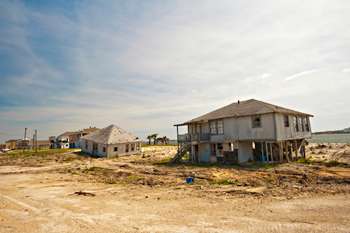Public policy approaches to the impact of hurricanes and severe storms

New structural and nonstructural solutions could better protect the Houston-Galveston region from the impact of hurricanes and severe storms, according to a research paper by energy, engineering and environmental law experts at Rice University's Baker Institute for Public Policy.
The paper, "Legal Issues in Hurricane Damage Risk Abatement," examines various alternatives for mitigating floods and storm damage and analyzes the federal regulations that could apply in seeking funding for the proposals. It was co-authored by Jim Blackburn, a professor in the practice of environmental law at Rice and Baker Institute Rice Faculty Scholar; Regina Buono, the Baker Botts Fellow in Energy and Environmental Regulatory Affairs at the institute's Center for Energy Studies; and Larry Dunbar, project manager for Rice's Severe Storm Prediction, Education and Evacuation from Disasters Center (SSPEED).
Past discussions of hurricane-protection options for the Houston-Galveston region have focused on constructing a floodgate at the mouth of either Galveston Bay or the Houston Ship Channel. In the latest analysis of options that federal, state and local officials might consider, SSPEED experts this summer issued a report offering a third alternative: a mid-bay gate halfway between the previously discussed sites.
"It is impossible to discuss mitigating these hurricane-surge damage issues without taking federal environmental law and policy into account, particularly if federal money is being relied upon, a point that seems to be missed by many local advocates," said Blackburn, who is co-director of SSPEED. "At least two alternatives exist that offer substantial protection of industry and residences in the bay's high-risk zone, but the law and policies relate to each in different ways. The mid-bay alternative might be able to be funded with local and/or state monies, whereas the lower-bay alternative almost certainly will require federal money, thereby more directly invoking federal environmental laws and funding policies."
More information: Emerging Legal Issues in Hurricane Damage Risk Abatement: bakerinstitute.org/media/files … rotection-111015.pdf
Provided by Rice University
















